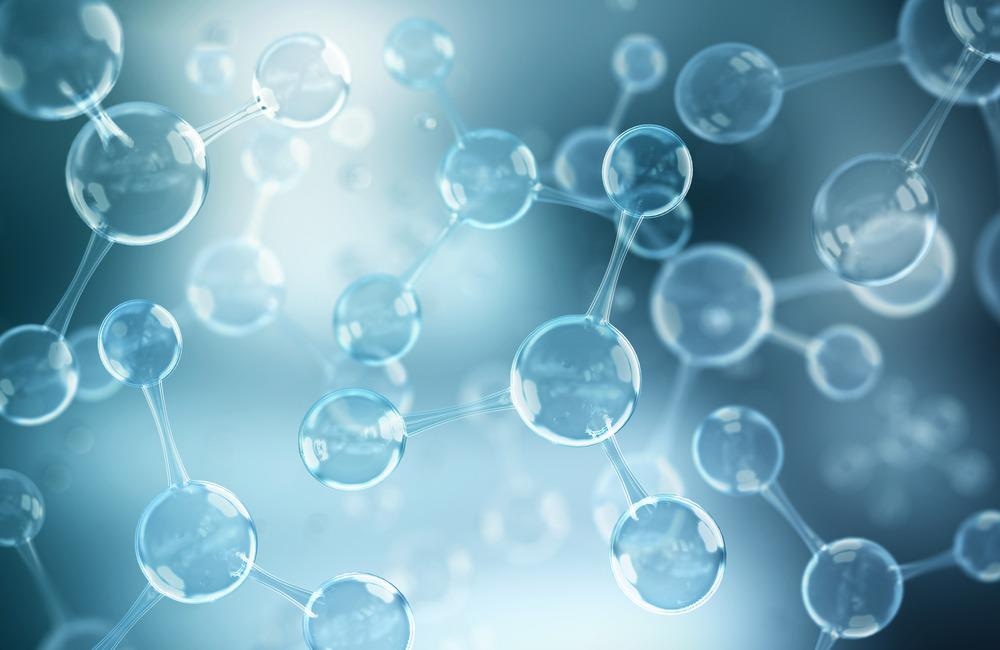 By Surbhi JainReviewed by Susha Cheriyedath, M.Sc.May 2 2022
By Surbhi JainReviewed by Susha Cheriyedath, M.Sc.May 2 2022In an article recently published in the journal ACS Applied Energy Materials, researchers discussed the enhancement in the hydrogen evolution reaction (HER) by regulating the metal/oxide heterostructure.

Study: Regulating the Heterostructure of Metal/Oxide toward the Enhanced Hydrogen Evolution Reaction. Image Credit: Anusorn Nakdee/Shutterstock.com
Background
Electrochemical water splitting is an efficient, safe, and long-term method of producing hydrogen, which is one of the most appealing renewable fuels. To avoid the harmful effects of acid fog and to keep electrolyzers from corroding, alkaline water electrolysis has been frequently used. However, because of the low efficiency of water dissociation, the catalytic activity of the HER in an alkaline medium is substantially weaker than in an acidic medium. The synergistic impact of metal hybridization with an oxide is an efficient way to improve HER activity.
Despite tremendous advancements, there are sparse reports available on optimizing the interface of metal/oxide for the best possible interaction between the metal and the oxide. Because the number of metal/oxide active sites and intrinsic activity is highly dependent on the heterostructure, controlling the metal/oxide interface structure to improve HER performance is highly desirable. Ni-based compounds have recently piqued interest due to their inexpensive cost, abundance, and high catalytic activity.
About the Study
In this study, the authors discussed the adjustment of the Ni/NiO interfacial structure and its impact on HER activity. On interlaced Ni nanosheets, a large number of worm-like NiO nanoflakes were generated. Owing to its good HER performance and ease of fabrication, electrodeposited Ni was chosen as the research model to examine the regulation and influence of the metal/oxide heterostructure. Anodic NiF2 was transformed into a porous film of NiO with a low crystallite size by annealing in air. Electrochemical cycling in 1M KOH aided the production of Fe-doped and amorphous nickel hydroxide. A chemical precipitation approach was used to create an extremely thin NiO coating on anodized Ni foil.
The team used three procedures: annealing, electrochemical oxidation, and chemical precipitation, to make NiO with diverse morphologies and surface chemical states over Ni. Ni/NiO-ec, Ni/NiO-an, and Ni/NiO-cp were the names given to the prepared Ni/NiO hybrids.
The researchers used alternative methods such as doping and carbon coating to improve the performance of Ni/NiO-cp, and to prove the potential of controlled chemical precipitation in the fabrication of highly efficient and cost-effective HER catalysts.
Observations
A chrono-potentiometric test at 10 mA cm-2 revealed that Ni/NiO-cp had good stability, with the overpotential that increased by 29 mV after 12 hours. A pair of redox peaks associated with the interaction between Ni2+ and Ni3+ were observed. After the stability test, the oxidation charge of Ni2+/Ni3+ was changed from 117.6 to 110.1 mC. Ni/NiO-cp had the greatest possible plateau period of 0.38 hours against 0.05 h for Ni/NiOec and 0.02 hours for Ni/NiO-an.
The controlled nucleation rate and orientational development of NiO resulted in Ni/NiO-cp. A lot of oxygen vacancies were found in Ni/NiO-cp, along with a lot of surface hydroxyl species, and a lot of metal/oxide contacts. The H2O molecule adsorption, electrolyte penetration, and proton transport were enhanced. The best HER activity was found in Ni/NiO-cp, which was ornamented with many worm-like NiO nanoflakes, and had the most hydrous oxide nature, the most abundant Ni/NiO interface area, the largest concentration of oxygen vacancies, and the improved structural flexibility.
The overpotential to reach 10 mA cm-2 for Ni/NiO-ec, Ni/NiOan, and Ni/NiO-cp, respectively, was 102, 103, and 72 mV, which was significantly lower than that for an electro-deposited nickel. The metal-O bond, hydroxyl group, and oxygen vacancies were deconvoluted from the O 1s spectra and yielded three peaks at 529.2, 531.0, and 531.8 eV, respectively. When compared to the unmodified equivalent, the HER overpotential to provide 10 mA cm-2 was reduced by 124 mV. At large currents, i.e., >100 mA cm-2, the performance characteristics of Ni/NiO-cp were better than Pt/C.
Conclusions
In conclusion, this study investigated the structure-activity connection and the tuning of the metal/oxide interfacial structure. A simple yet finely controlled chemical precipitation procedure was used to make Ni/NiO-cp. The regulated nucleation rate allowed for preferential NiO growth. On vertically oriented Ni nanosheets, many worm-like NiO nanoflakes were formed. Ni/NiO-cp displayed a significantly better HER performance owing to the more accessible active sites, the lower energy barrier of the Volmer pathway, and more facile proton transfer. Under high currents, the catalytic activity of Ni/NiO-cp was found to be better than that of Pt/C.
The authors emphasized that the exploration and knowledge of the metal/oxide hybrid are beneficial in the development of platinum-free HER catalysts. They also believe that the simple control technique and structure-activity connection described in this study are useful in the search for low-cost, high-efficiency HER catalysts.
More from AZoM: What Multi-Analytical Techniques are Used to Assess Paintings?
Disclaimer: The views expressed here are those of the author expressed in their private capacity and do not necessarily represent the views of AZoM.com Limited T/A AZoNetwork the owner and operator of this website. This disclaimer forms part of the Terms and conditions of use of this website.
Sources:
Yuan, Z., Yao, X., Zhang, G., et al. Regulating the Heterostructure of Metal/Oxide toward the Enhanced Hydrogen Evolution Reaction. ACS Applied Energy Materials (2022).
https://pubs.acs.org/doi/10.1021/acsaem.1c03970#